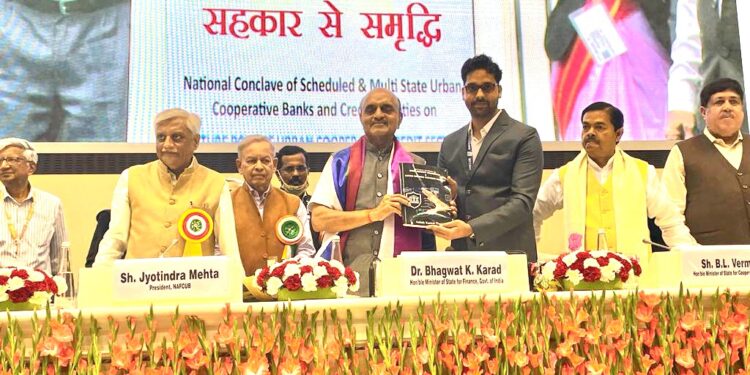This book was written by Ashok Kumar Tiwari who is working as CISO & IT Head at TMSBL Mumbai and book has been launched in the presence of Dr. Bhagwat Karad, MoS Finance, Govt. of India, Shri B. L. Verma, MoS, Minister of Cooperation, Shri Jyotindra Mehta, President, NAFCUB, Shri Satish Marathe, Director, RBI
ABOUT THIS BOOK
I have tried to keep it simple and covered all topics in this book pertaining to checklist of Cyber Security framework and digital banking payments security, facing challenges in compliances of Cyber Security Framework & how to use all Banking Digital Channels.
We are aware that now a days Information and Communication Technology has become an integral part of our day to day life. Increasing use of cyberspace has also made us vulnerable to cybercrime threats. We must be vigilant and careful while connecting digitally to the outside world whether for financial transactions via mobile banking app., or social media, searching things on the internet, etc.
The information is intended to create awareness amongst the people about various cyber threats that can impact them and provide some tips to safeguard themselves against cybercrimes. I have tried to keep it simple so that even a common man can understand it.
This book is an excellent field guide for all Digital Banking users and all IT Professionals working in the Security of Information technology. It is a comprehensive book that is easy to read and understand. This is the best book to read if you want to understand the psychology behind the technology.
Adoption of digitalisation is very important for the Banking Sector. Digitisation is nothing but conversion of data into a digital format with the adoption of technology.
By embracing digitalisation, Banks can provide enhanced services to customer.
This provides convenience to customers and helps in saving time. Digitalisation reduces human error and thus builds customer loyalty.
Today, people have round-the-clock access to Banks due to Online Banking.
Digitalisation has also benefitted customers by facilitating cashless transactions.
Customers need not store cash anymore and effect transactions from any place, any time.
Computer security is also called Information Technology Security which is all about securing Computer Systems and Networks by denying unauthorised access to data and preventing theft or damage to hardware and software, besides disallowing disruption or misdirection of Services that a Bank provides to its customers.
Computer Security mainly involves digital measures such as electronic passwords and encryption. However, restricting access to critical infrastructure is equally important.

























































